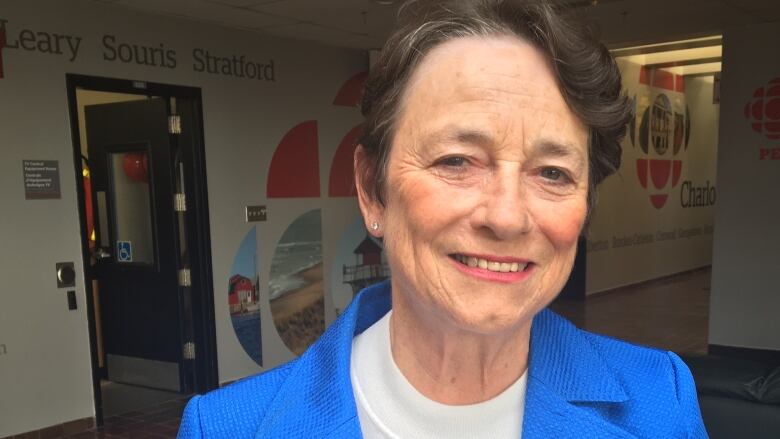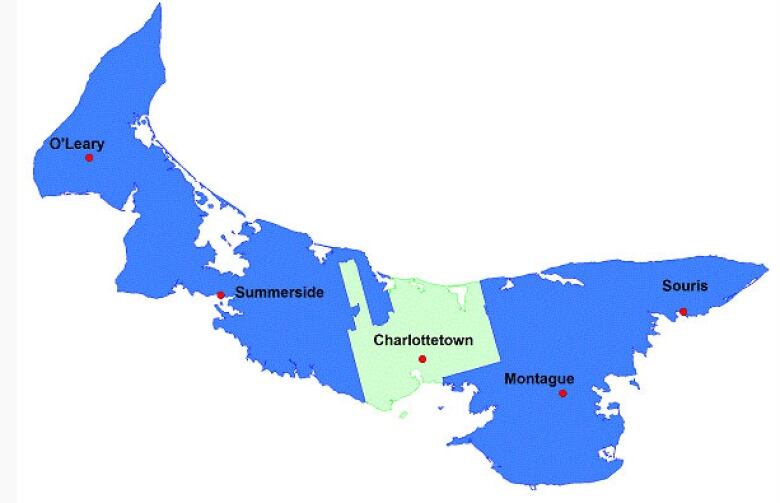'Rude awakening' in store for Canadians who rely on EI, says P.E.I. senator
Measures to ease CERB recipients onto EI expire in September, so some will suffer

Many Canadians relying on employment insurance this year are in for a "rude awakening"come September, says P.E.I. Senator Diane Griffin.
That's when some measures meant to ease people off the Canada Emergency Response Benefit and onto EIare set to expire.
One such measurewasthe temporary use ofa minimum unemployment rate of 13.1 per cent to calculate how many hours are required to qualify for EI and thus how many weeks of benefits those thrown out of work during the COVID-19 pandemic can receive.
Those levels are normally set individually among 62 EIregions across Canada based on the local unemployment rate. It's meant to reflect that less EI would be needed in regions with a higher demand for workers (and thus a lower jobless rate).
Using a minimum jobless rateof 13.1 per cent in these COVID-19 era calculations has meant thateven in regions with traditional strong labour markets, Canadians had to work at most420 hours within the past year to qualify for up to 45 weeks of benefits. Typically, these same people would have had to clockmore hours to qualify in places like Quebec andOntario and then would be on EI benefits for a shorter term.
As a further measure during the pandemic, the federal government provided Canadians with a one-time credit of 300 hours worked to determine eligibility, leaving them needing to have worked only 120 hours before they could receive EI benefits.
Fewer weeks of benefits ahead
But in September,employment insurancecalculations are set to go back to the old system, using three-month rolling average unemployment rates in each region. With the national employment rate currently at 8.1 per cent, many Canadians are likely to see a drop inthe number of weeks they'll receive EI payments.
What it's going to impact are the people who are the most vulnerable, who depend upon seasonal employment.- Senator Diane Griffin
"We're going to have a rude awakening at some point for quite a number of people," Griffin warns, unless the federal cabinet keeps using the 13.1-per-cent floor for its EI math.
"It's not going to affect senators. It's not going to affect MPs What it's going to impact are the people who are the most vulnerable, who depend upon seasonal employment."
In this spring's federal budget, the Trudeau government announced it will maintain a threshold of 420 hours required for all Canadians to qualify for EI benefits regardless of where they live until October 2022.
But Griffin said there will be "weeping and gnashing of teeth" from claimants who in some regions stand to lose up to 16 weeks in benefits after September.
'Inequity' in E.I. zones
On Prince Edward Island, she said the change will shine new light on what she and others have calleda local disparity ever sincethe Harper government split the province into two EIregions back in 2014.
That change has meant, as Griffin described it, that people doing the same job at the same fish plant might qualify or not qualify for EIor receive more weeks of benefits or fewer depending on where they sleep at night.

"You're treated in a different manner than you would be if you had a different address," she said. "We've got a real inequity here."
With the pandemic changes, there's been a level playing field for EI benefits across the Island, and across most of the country.
Starting in September, that winds down. People living in the Charlottetown zone, where unemployment rates have traditionally been lower than in more rural parts of P.E.I., can expect to receive fewer benefits than rural Islanders.
EIneeds overhaul, says MP
Charlottetown MP Sean Casey has been calling for P.E.I.'s two zones to be merged back into one ever sincethe split took effect.
He said he expects a report on employment insurance coming in June from the Standing Committee on Human Resources which Casey chairs will recommend a purging of EIzones across the country.
With people commuting longer distances and more and more people working remotely, he called the zones "an antiquatedbut convenient way to divide up the country,but not necessarily one that is always fair."
He and Griffin agreed that dividing P.E.I. into separate zones has led people to try to cheat the system.
"It promotes dishonesty," Casey said. "We all know of people who live on one side of the line and pick up their unemployment cheque on the other side of the line because the cheques are bigger and last longer."
Casey said he expects the report from his committee to put forward recommendations for a "substantial" retooling of employment insurance.
"The EI system really hasn't seen a major overhaul in decades, but the way we work has drastically changed, and COVID has really brought that home," said Casey.
"There's a gig economy, there's contract workers, there's self-employed folks. The EI system that we presently have doesn't serve any of them very well, and there's more and more of them."












_(720p).jpg)


 OFFICIAL HD MUSIC VIDEO.jpg)
.jpg)



























































































